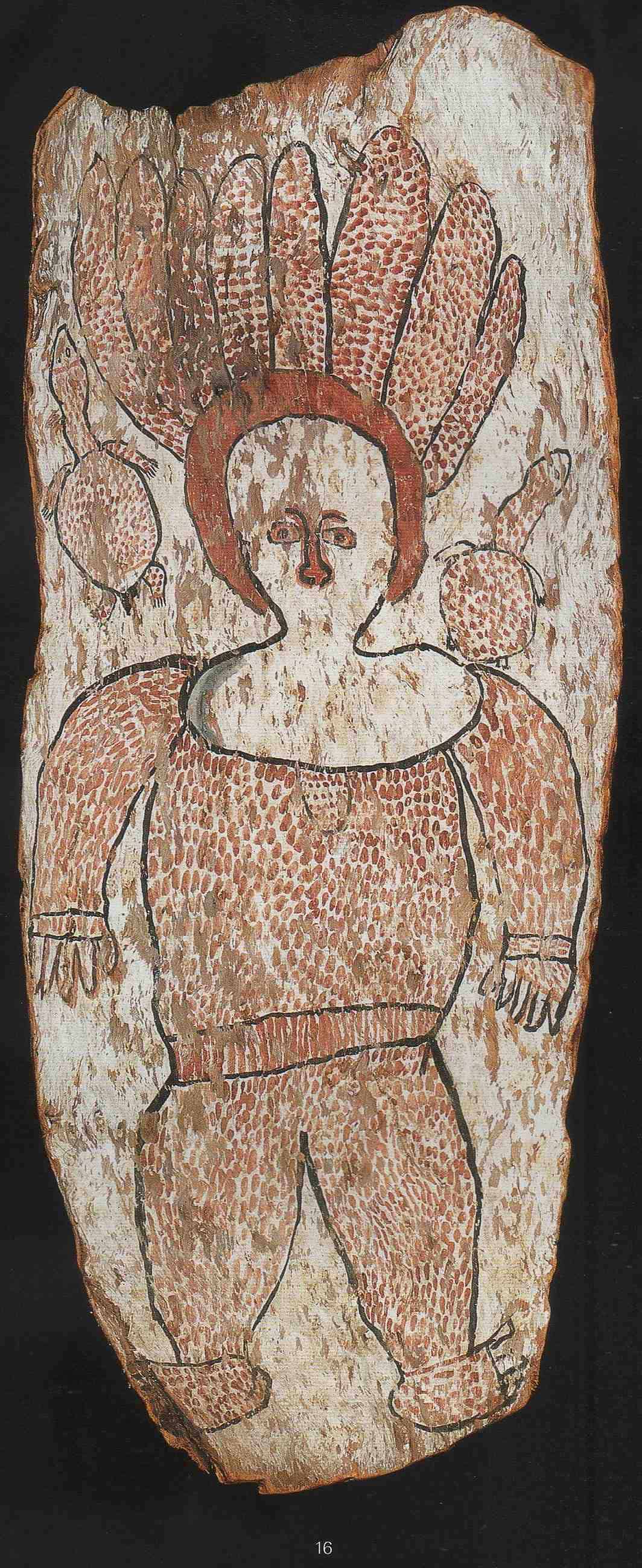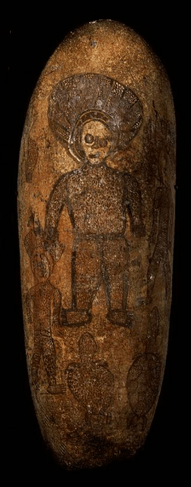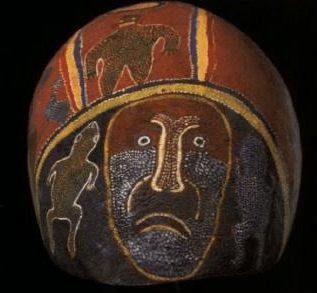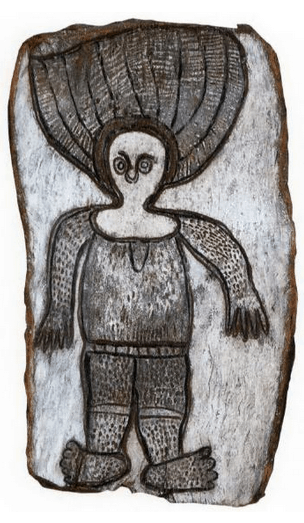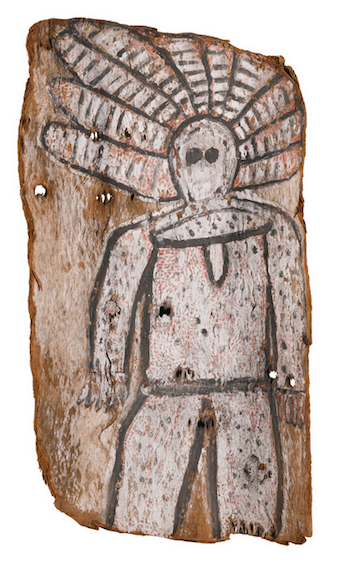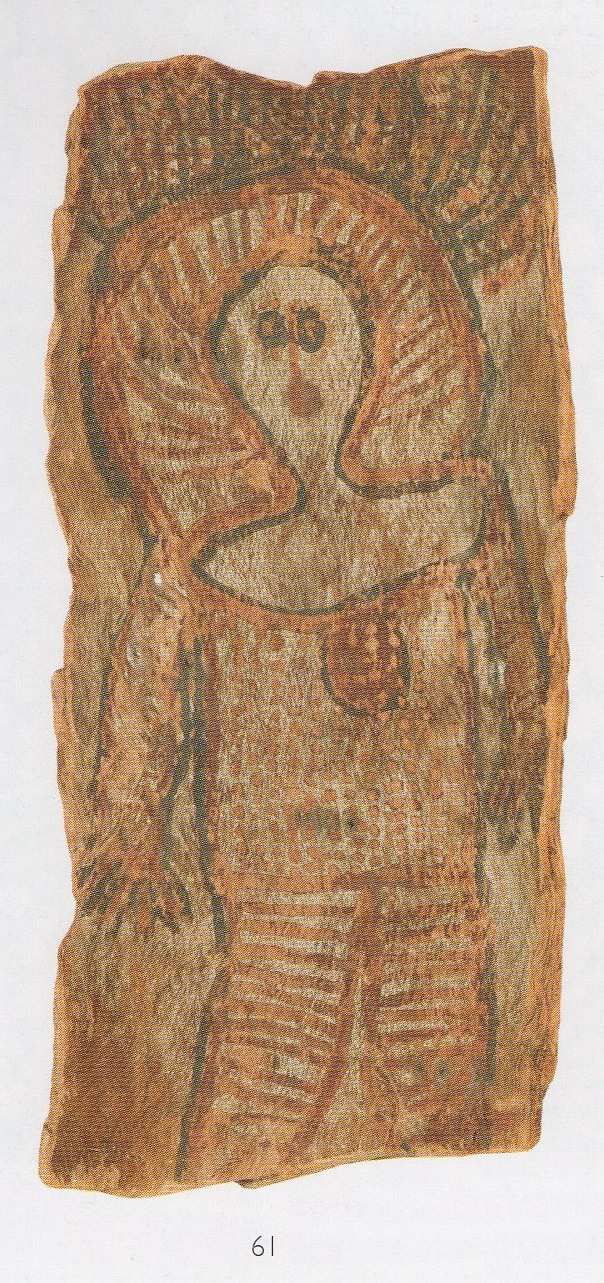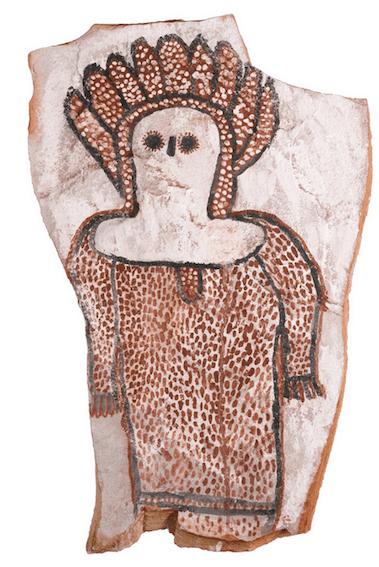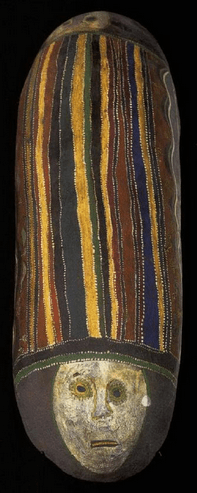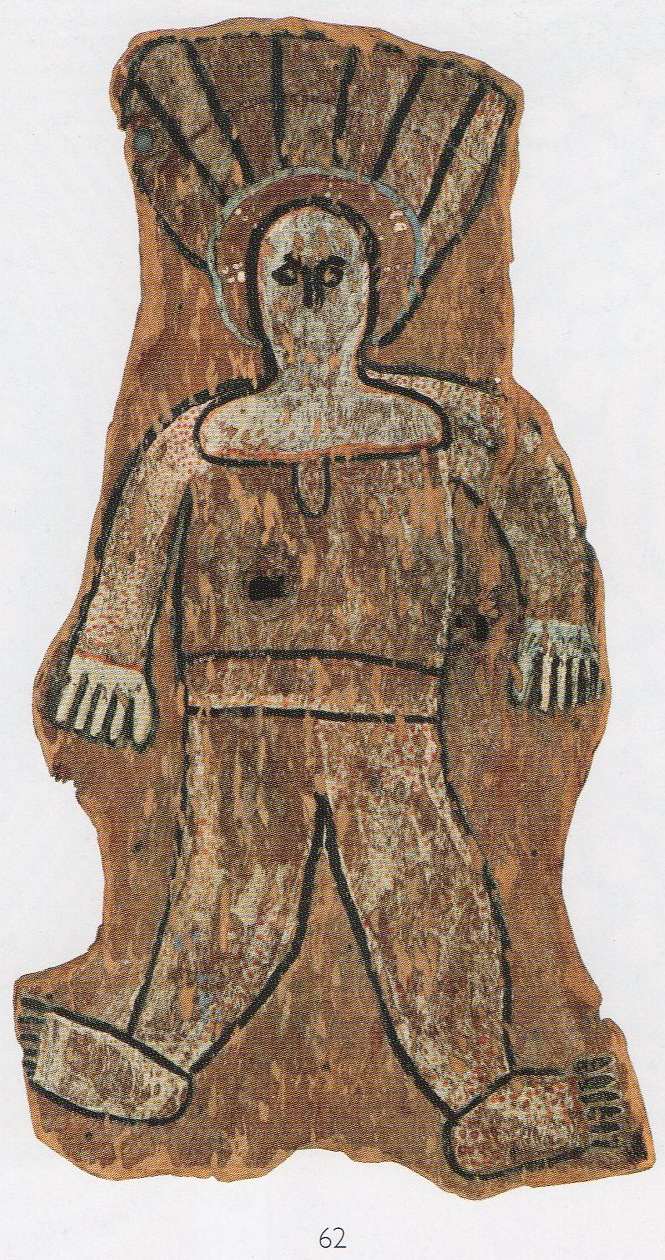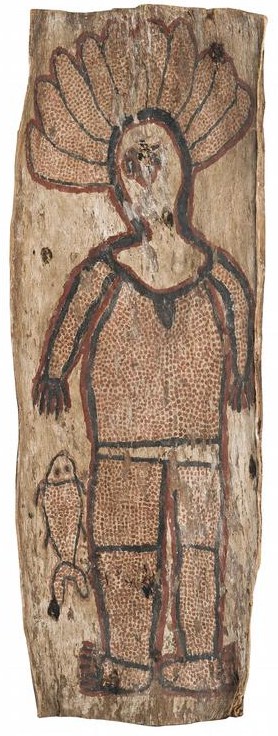Wattie Karruwara Wandjina paintings
Wattie Karruwara is a famous Wandjina painter form the Kimberley in Western Australia. He was one of the pioneer commercial wandjina painters. The aim of this article is to assist readers in identifying if their a bark painting/slate is by Wattie Karruwara by comparing examples of his work.
If you have a Wattie Karruwara bark painting or slate to sell please contact me. If you just want to know what your Karruwara painting is worth to me please feel free to send me a Jpeg because I would love to see it.
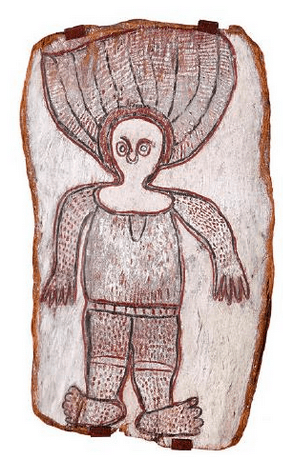
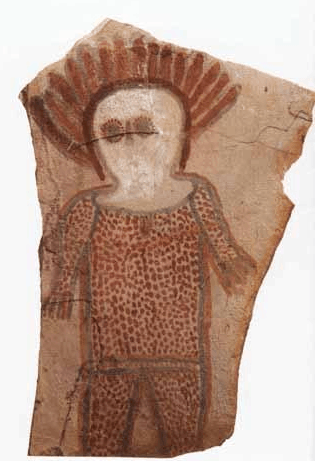
Wattie’s Wandjina figures are drawn with a full body. The figures are drawn in an inland Wandjina style with very large head-dresses which look more fan-shaped than hallo shaped. Wandjina takes many forms according to the exact location and tribal group that are its custodians and Watties images represent those from his area. The bodies are usually covered with red. His Wandjina faces vary but often don’t have eyelashes and sometimes have eyebrows. Watties Wandjinas have small eyes, nose, and delicate hands and feet.
Wattie Karruwara was born in the Hunter River basin in the Kimberley around 1910. In 1921 during his youth, two shipwrecked sailors stole a canoe from a clansman and, in an attempt to cross the Hunter River, became swamped. On their return to shore, the owner of the canoe speared and killed them. As a consequence, the police detained four women and two men, of whom Wattie was one. After a period in Wyndham jail and a trial in Perth, Wattie Karruwara was eventually released as a minor. He spent nearly 20 years in Perth before returning to his home at Mowanjum.
Wattie was a pioneer artist for commercially painting Wandjina. Other pioneer artists include Waijin Djanghara, Lilly Karedada and Alec Mingelmanganu
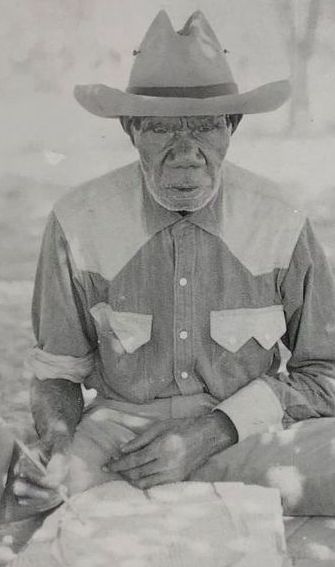
Biography
In Mowanjum, Wattie lived with his uncle Mickey Bungkuni a senior Wunambal elder who painted Kimberley Rock Art and taught Wattie to paint. There are a few early examples of Watties works collected by anthropologists before 1970. The majority of his paintings were done in the early 70’s. Wattie Karruwara and Charlie Numbelmoore were among the first artists to emerge as individual artistic identities prior to the 1970’s. Although most of Watties works are on bark he also painted coolamon and on slate.
Wattie was born in the Hunter River (Mariawala) basin, an area known as Elalemerri to the Woonambal (Wunambal) in about 1910. The Hunter River, rising in the rugged majesty of Mitchell Plateau flows into the turbulent waters of Prince Frederick Harbour.
His clan is known as Landar after the small yellow-flowered, holly-leaved, pea-flower, Bossiaea bossiaeoides, locally called Emu-flower. The flowers and seedpods are a favorite food of emus. Wattie had, as did all members of his estate, the Brolga (karangkuli) as his primary patrilineal moiety totem.
In his later career he did a series of watercolors and painted non wandjina themes on traditional dishes (coolamon) and carved boab nuts.
Wattie Karruwara is sometimes spelled Wattie Kaduwara, Wattie Karrawara or Karawara
All images in this article are for educational purposes only.
This site may contain copyrighted material the use of which was not specified by the copyright owner.
Recommended reading
Wattie Karruwara Wandjina Images
The following is not a complete list of works but gives a very good idea of this artists style and variety.

